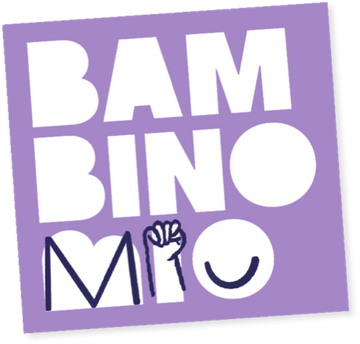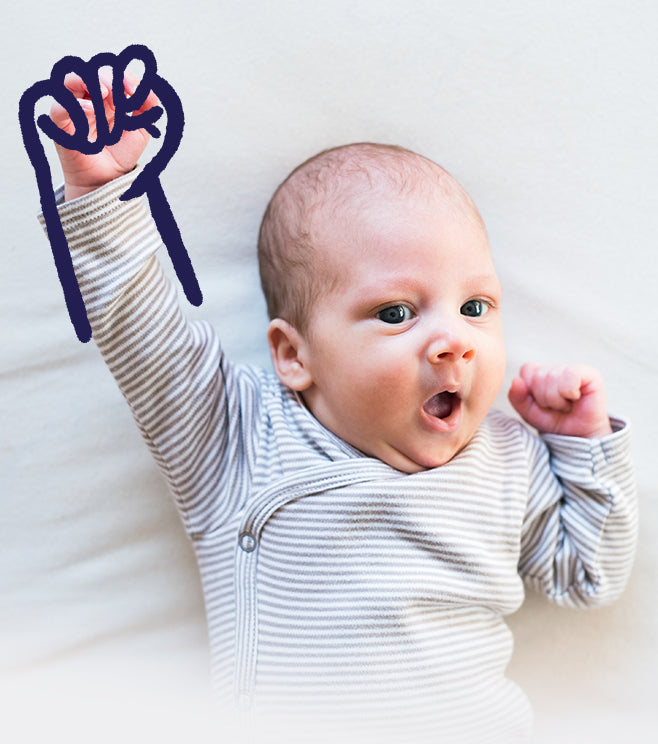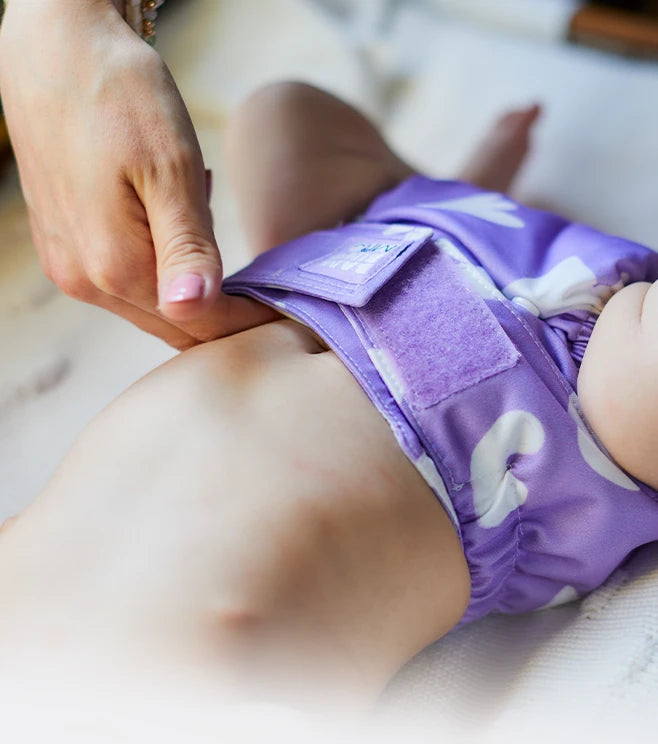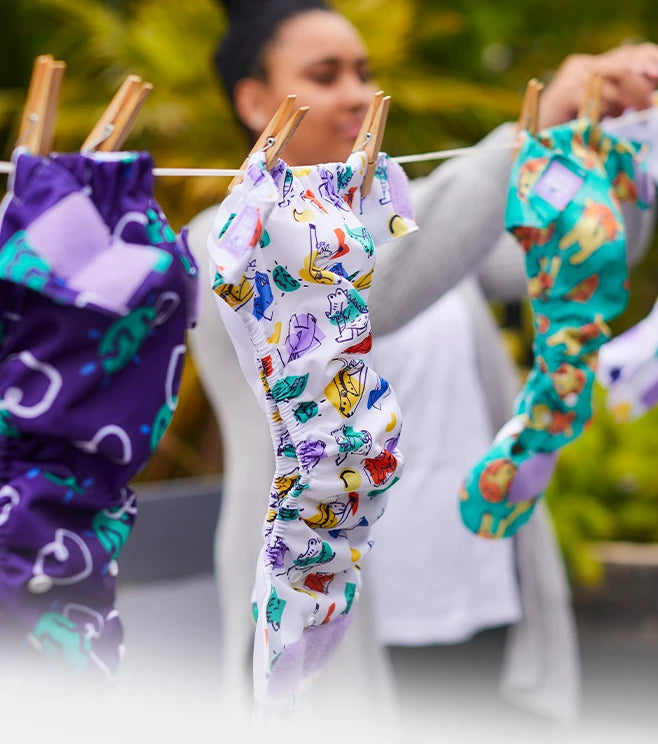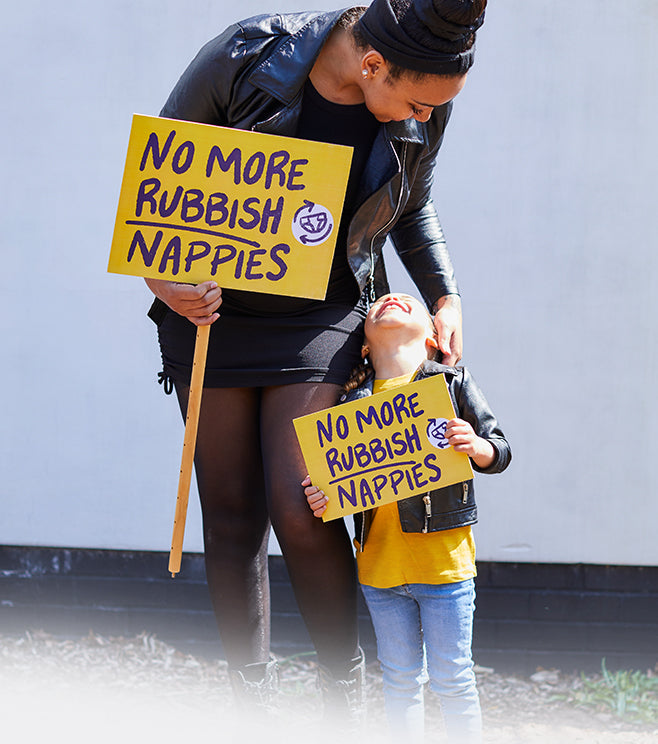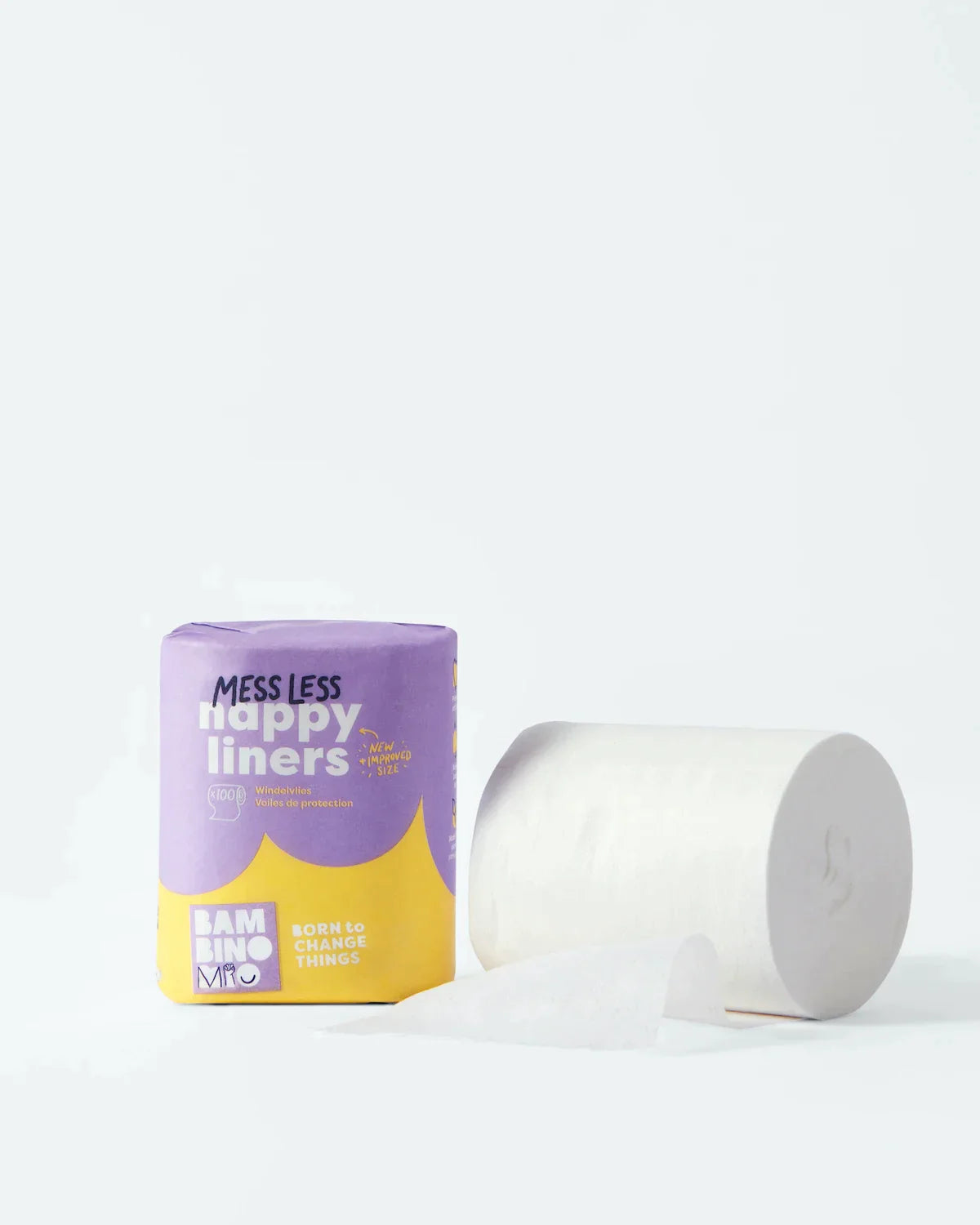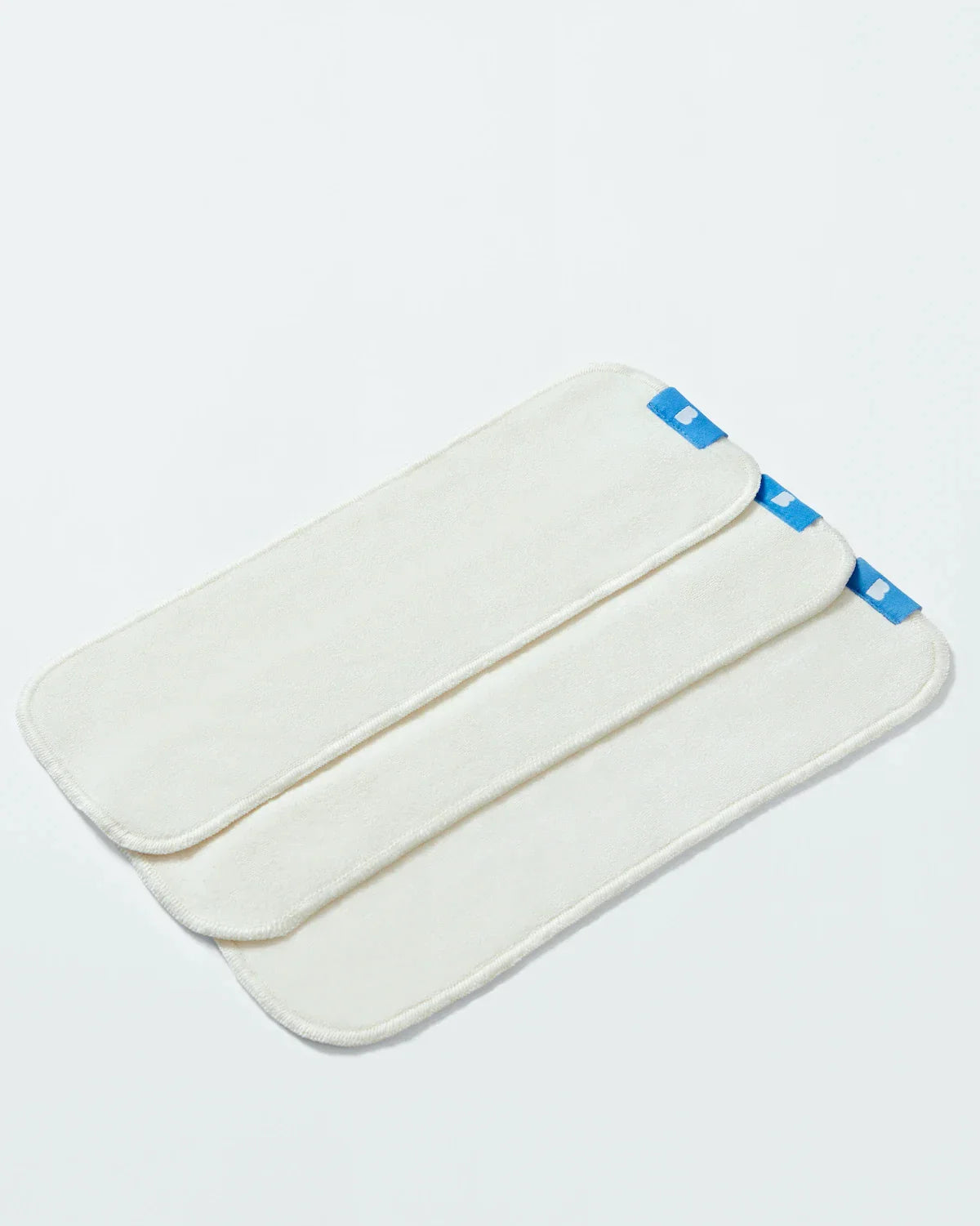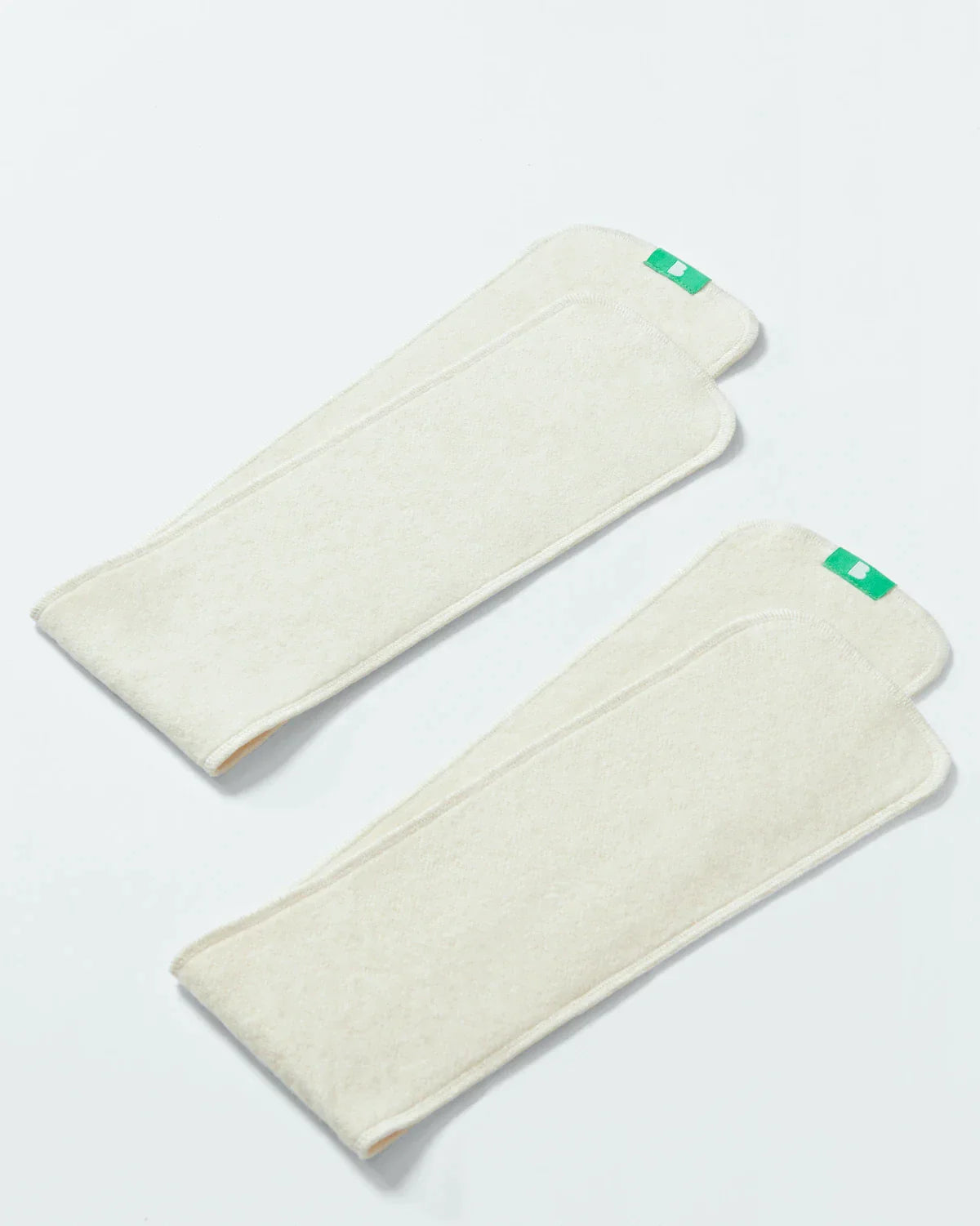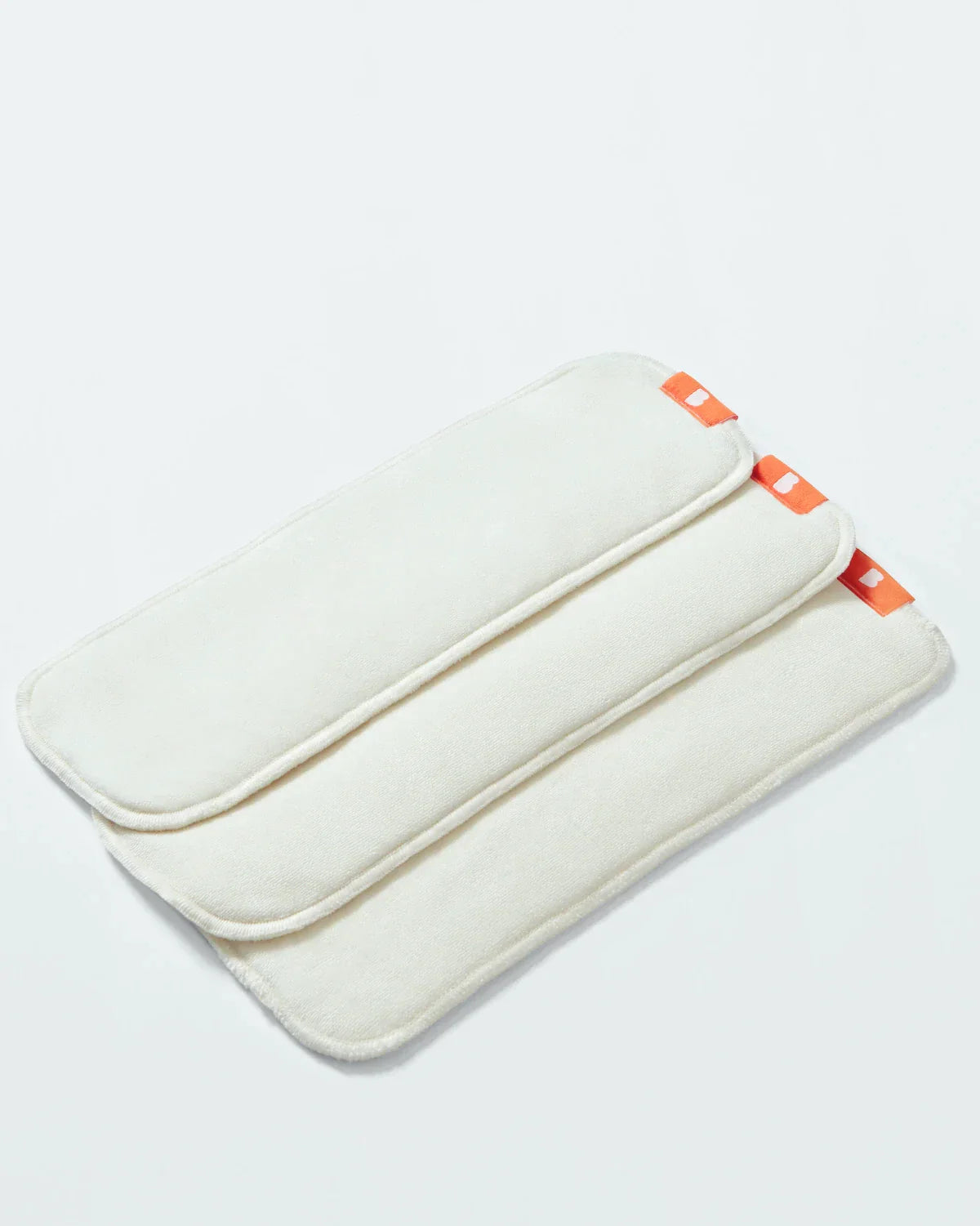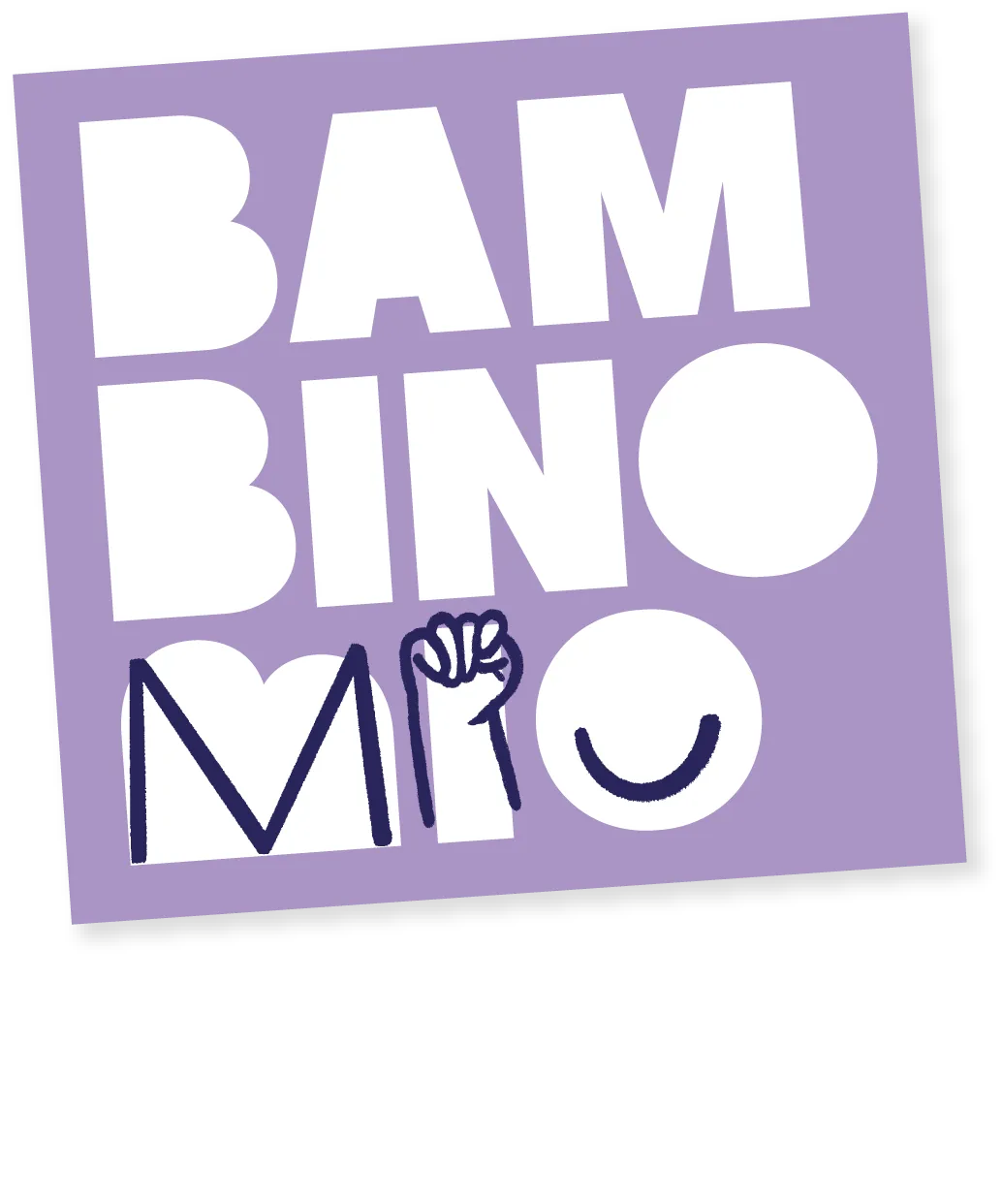What Are Reusable Diapers? A Comprehensive Guide for Parents
Partager
- Bambino Mio
- 15 / 11 / 2023
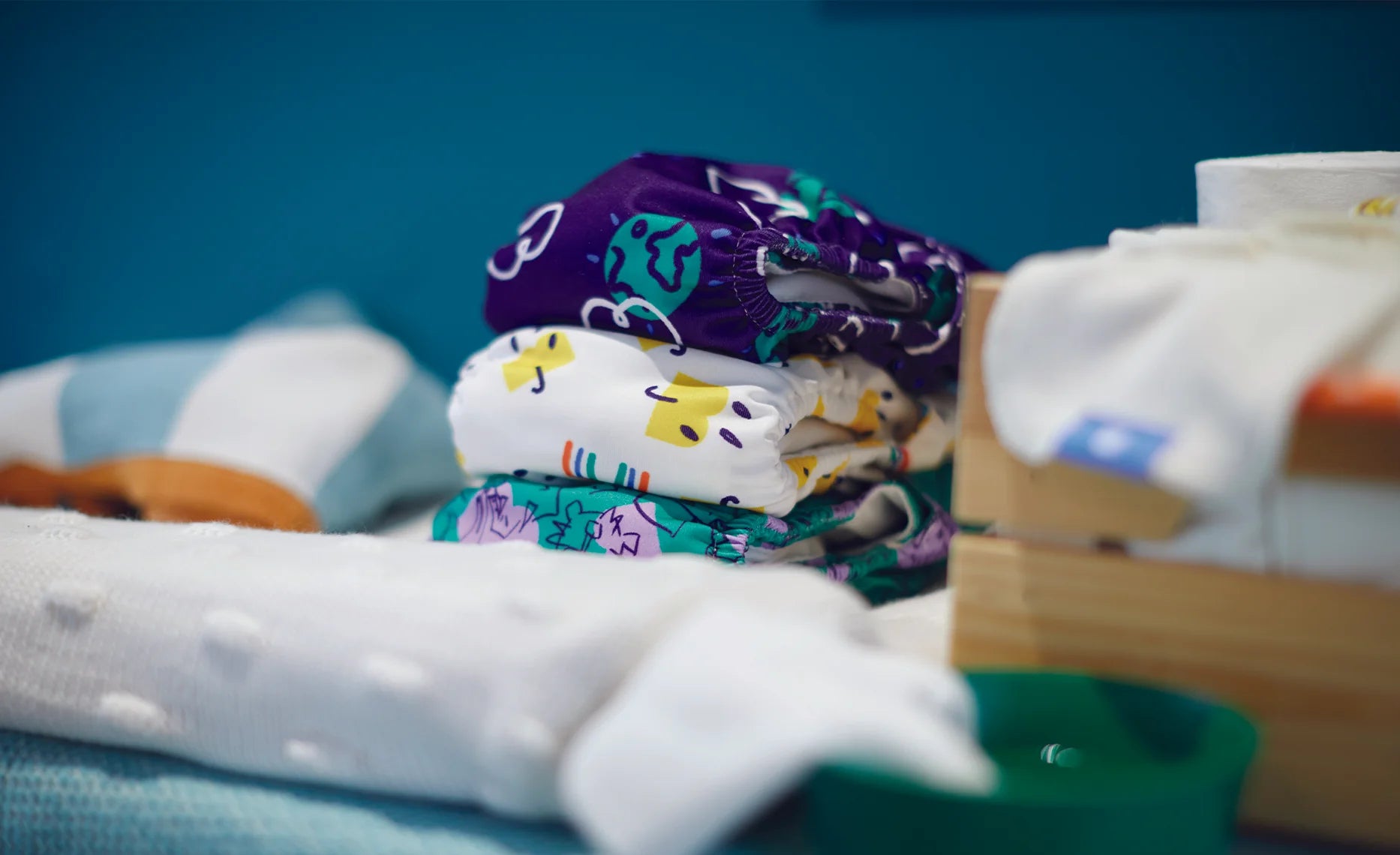
Inside this Article:
- What are reusable nappies?
- The environmental benefits of reusable nappies
- The cost savings of reusable nappies
- We make using reusables simple!
- How to wash reusable diapers
- How to dry and store reusable diapers
- FAQs
- How long do washable diapers last for?
- Can a newborn baby wear reusable diapers?
- Should I use fabric conditioner with my cloth diapers
- How many reusable diapers do I need?
- Citations and References
Discover the best reusable diapers and the benefits of using reusable diapers. Let us guide you on a path to happier diapers and help you start your most important sustainable parenting decision today.
What are reusable nappies?
Simply put, reusable diapers are diapers that you wash and reuse, rather than just throw them in the bin. Many parents use the same bundle of diapers on their baby from birth to potty training and then on subsequent children. You might also see reusable diapers referred to as cloth or washable diapers.
Reusable diapers perform the same function as disposable diapers - they soak up your baby’s wee and collect their poop. With reusables, however, you wash and dry them after they’ve been soiled, so you can use them again once they’re dry.
Disposable diapers are just that - when you change your baby’s disposable diaper, you throw it away and that one diaper will probably end up in a landfill for up to 500 years (1).
Most parents choosing reusable diapers for their children do so for environmental reasons - in the UK, a recent DEFRA report (2) found that reusable nappies have a carbon footprint 25% smaller than disposables.
There are also significant cost benefits, too. Reusable diapers can save a family around $900 by the time your child is potty trained. If you use your set of cloth diapers on future siblings, you’ll save even more!
The environmental benefits of reusable nappies
Reusable diapers really are better for the environment as you’ll be reducing your CO2 footprint by 25%. Can you imagine how much CO2 would be produced during 3,000 journeys to the moon in a car (that’s 700 million miles, btw)? If every baby in the UK, for example, was in reusable diapers rather than single-use ones, the amount of CO2 saved each year would equate to this!
The average child goes through around 5,000 disposable diapers until they’re potty trained, whereas a bundle of 20 reusable diapers will last from birth to toddlerhood. This represents a saving of 97.5% in raw materials with just one child.
Reusable diapers are designed to perform well wash after wash, and if cared for well, can last through not just one but multiple babies.
Disposable diapers, on the other hand, can take centuries to degrade and most of the US’s disposable diapers are languishing on landfill sites. Around 18 billion disposable nappies (3) are tossed away each year in the US, creating a 3,000,000-ton methane-generating pile of rubbish (4).
The cost savings of reusable nappies
When you’re using disposable diapers, you casually sling a pack into your shopping cart (whether real or online) with scarcely a second thought, until you’ve hit that daunting number of 5,000 or so.
We found that the cost of a US branded disposable diaper in 2022 was 30c - that’s 5,000 nappies at 30c each. At this rate, you’ve racked up a bill of around $1,500 by the time your toddler has conquered the potty.
A Bambino Mio Changemaker Bundle, however, will cost you $439.99 from birth to toddler. Even if you factor in the washing and drying costs of around $150 for the duration, you’re making a saving of at least $900 over your baby’s nappy years.
If you have a second or third baby and your cloth diapers are still going strong due to your loving care, you’ll start that saving cycle all over again.
The second and third time around is even better for making savings as you don’t have the initial outlay for your diapers (hurrah!).
We make using reusables simple!
You could say we make using cloth diapers re-easable…
If you’ve been browsing reusable diapers, you’ll have noticed that there’s lots of different types on the market and you might find it all a bit confusing.
There’s two-piece diapers, all-in-one diapers, pocket diapers and foldable diapers and that’s even before you get to the inserts, boosters and wraps. When you have a newborn, you have enough to get to grips with without navigating a complicated diapering system.
This is why we decided to make life easier for reusable diaper fans. We took the best features from our Miosolo all-in-one diapers and our Mioduo two-piece diapers and combined them into one uber-diaper - the Revolutionary Reusable.
The Revolutionary Reusable is the only truly suitable-from-birth diaper and, if you choose our Changemaker Bundle, you’ll get a stash of 20, alongside two handy wet bags and lots of other goodies.
How to wash reusable diapers
Most people find they only need to wash their cloth diapers every other day so they alternate their stash - one half is ready for use and the other is drying.
It’s also really important to wash your reusable diapers before you start using them as this opens up and fluffs out the fibers, making them more absorbent. Just remove any inserts, fold over the tabs and wash at 100F with a non-biological detergent (but no softener as this reduces absorbency). Clothesline drying is the best option, but an indoor clothes rack or a cool tumble dry is also great.
You can use a washable diaper liner with each diaper so that you can easily remove any poop and flush it away (the poop, not the liner!). When it’s changing time, you simply place the soiled diaper, liner and reusable wipe into your lidded storage bucket or wet bag. Bambino Mio’s Changemaker Bundle comes with a Stay at Home wet bag so you can easily transfer your diapers into your washing machine.
Modern washing machines can clean dirty diapers thoroughly at just 100F, so you don’t need to wash at high temperatures. Washing at 130F or higher isn’t necessarily more effective, but it certainly is more expensive and increases your carbon output.
You can add a boost to your wash with our Nappy Cleanser to get your diapers extra clean if you prefer, but chlorine-based bleaches and fabric conditioners will shorten the life of your nappy bundles.
How to dry and store reusable diapers
In an ideal world you’d be able to line dry your washable diapers every time, but it’s not always possible. Air drying on a rack or in your laundry room is a great way to get them ready for action and while it’s tempting to put your cloth diapers next to direct heat, this can affect their performance and damage them.
If you tumble dry your cloth diapers then only use a cool setting as heat isn’t just expensive, it can damage the fabric and any waterproof outers your diapers may have.
Once your stash of cloth diapers is dry, it’s a good idea to place an absorbent insert and a reusable liner in each one before folding them up and stacking them next to your changing to make life even easier.
FAQs
How long do washable diapers last for?
With low-temperature washing and drying, no chlorine bleaches or fabric softeners, you can expect your cloth nappies to last through not just one baby but a couple. If you no longer need our diapers, we encourage you to pass them on to a friend or cloth diaper library for them to be reloved.
Can a newborn baby wear reusable diapers?
Absolutely! Washable diapers are suitable from birth and are designed to grow with your baby from birth to potty training.
Should I use fabric conditioner with my cloth diapers
You should not use fabric softeners or conditioners with your reusable diapers because these laundry additives are formulated to coat each fiber of your fabrics. While this might make your favorite jeans feel softer, it’ll make your diapers unable to absorb liquid and will also damage them over time.
How many reusable diapers do I need?
We recommend that you start with a Changemaker Bundle, which includes 20 reusable nappies, so that you have some “in the wash”
and some ready for action every day. You’ll probably change your baby’s diaper between six and eight times a day for the first few months and five or six times a day as they grow, so with 20 diapers you’ll always have a clean, dry diaper to hand.
Citations and References
(1) UK Government. City of Westminster. ‘Plastic Waste - Everything You Need to Know.’ 2023. Web. cleanstreets.westminster.gov.uk/plastic-waste-complete-guide
(2) Department for Environment Food & Rural Affairs (DEFRA). ‘Life Cycle Analysis of Nappies/Absorbent Hygiene Products 2021/23’ 2023. Web. randd.defra.gov.uk/ProjectDetails?ProjectId=20622
(3) The Washington Post. ‘A Highway Paved With Recycled Diapers May Change the Cloth vs. Disposables Debate.’ 2022. Web. www.washingtonpost.com/climate-solutions/2022/02/18/diaper-highway-nappy-recycling
(4) United States Environmental Protection Agency (EPA). ‘Facts and Figures About Materials, Waste and Recycling. Nondurable Goods: Product-Specific Data.’ 2022. Web. www.epa.gov/facts-and-figures-about-materials-waste-and-recycling/nondurable-goods-product-specific-data

